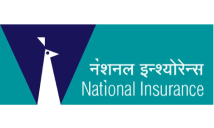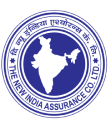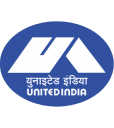
The year 2020 was in the news for the Coronavirus pandemic, an unprecedented event which rocked the whole world. While the world was reeling from lockdowns, infections and deaths, the insurance industry reinvented itself. The pandemic revolutionized both the products and practices of the insurance industry. Whether it was life insurance or health insurance, the industry witnessed standardization in products and digitization of operations. Let’s have a look at how the industry reinvented itself in 2020 –
Health insurance segment
The health insurance segment saw the launch of standardized insurance plans and policy clauses. Here’s a look at the major developments in the health insurance segment –
The launch of the Arogya Sanjeevani policy
To offer uniform coverage benefits under a single plan, the Insurance Regulatory and Development Authority of India (IRDAI) asked insurers to launch a standard Arogya Sanjeevani policy. The policy allows coverage of up to INR 5 lakhs and has uniform coverage benefits across insurers. Only the premium differs based on the company’s pricing policies. The Arogya Sanjeevani policy, therefore, offers standardized coverage for someone looking for a basic health cover.
Launch of COVID specific health plans
Understanding the need of coverage against COVID, the IRDAI introduced two standard COVID-oriented plans – Corona Kavach and Corona Rakshak. While the former is an indemnity oriented policy without deductibles or limits, the latter is a fixed benefit plan that pays the sum insured in lump sum in case of hospitalisation for 72 hours or more due to COVID. Both these plans are short-term plans that have standard coverage features. Like Arogya Sanjeevani, the premium for these policies differs across insurers.
Inclusion of telemedicine
To ease up OPD consultations during the pandemic, IRDAI asked insurers to include coverage for telemedicine if the plan allowed OPD coverage. This made health plans more inclusive in their scope and also allowed policyholders to avail of digitized treatments without the risk of infection.
Introduction of instalment premiums
To increase health insurance penetration and to make health plans affordable, the concept of instalment premium was launched. Now, policyholders can opt to pay premiums in monthly, quarterly or half-yearly instalments if the annual premium is too heavy on their pockets.
Standardization of policy clauses
To ensure that policyholders understand the technical nature of their health insurance plans easily, IRDAI standardized various clauses. The concept of pre-existing illnesses, policy exclusions and proportionate deductible in room rent was simplified. An indisputability clause was added which limited the power of insurers to reject claims after 8 years of coverage. Moreover, the health insurance policy was made more comprehensive by the inclusion of mental illnesses and modern treatments under the purview of the plan.
These changes have made health insurance plans more customer-friendly which have also driven up the demand of these plans.
Life insurance segment
In the life insurance segment too, standardization and digitization were observed in insurance policies. The life insurance segment saw two major changes which are as follows –
Elimination of wet signatures
In the time of social distancing and lockdowns, the need of physical signatures was replaced by digital signatures in proposal forms. Life insurance plans, thus, became digitized allowing customers to buy the policies without having to step out from their homes. Insurance companies resorted to video calls and email verification links to sell insurance policies entirely digitally so that the consumer’s needs could be met remotely.
Introduction of a standard term plan
Following in the footsteps of the health insurance industry, the IRDAI introduced the concept of a standard term insurance plan called Saral Jeevan Bima. The idea of the plan was launched in 2020 though the plan itself was offered for sale from 1st January 2021. Saral Jeevan Bima, thus, became the first standard term plan, with uniform coverage benefits across insurers.
The year 2020 was, therefore, the year of standardization and digitization in the life and health insurance industry. It has paved the way for a more developed and consumer-friendly market so that insurance penetration in India increases over the coming years.
































